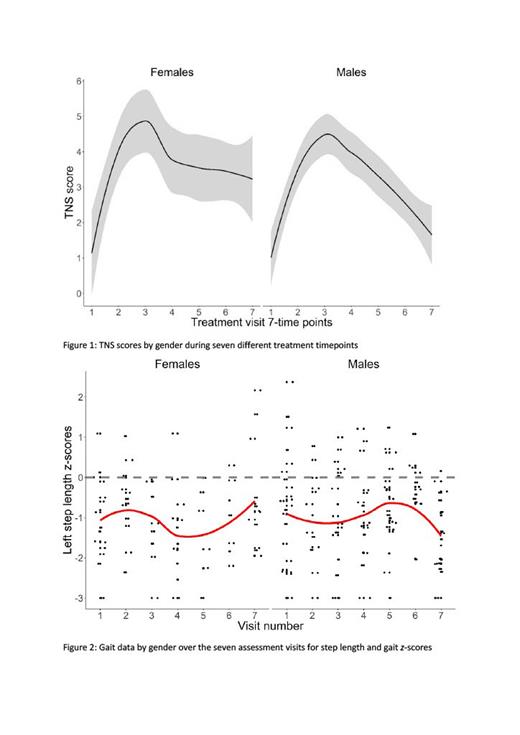Introduction
UKALL 2011 is a randomised study recruiting children and young adults (up to 25) with Acute Lymphoblastic Leukaemia (ALL) or Lymphoblastic Lymphoma (LBL). One of the aims of the trial was to reduce maintenance morbidity by randomising to Vincristine (VCR)/dexamethasone pulses or not. Results of this randomisation were presented at ASH 2022. In a sub-study, we also aimed to determine the natural history of vincristine induced neuropathy (VIN), including patients randomised to vincristine in maintenance or not and to determine pharmacogenomic risk factors for VIN.
Methods
Children and adolescents, aged 5-18yrs, were recruited from 5 centres in the UK. Patients were stratified by NCI risk, cytogenetics and end of induction MRD to receive Regimens A (NCI standard risk, MRD low risk), B (NCI high risk, MRD low risk) or C (Cytogenetic poor risk or MRD intermediate risk regardless of NCI risk). The maximum total number of vincristine doses was dependent on regimen and gender: females - Regimen A/B 33, Regimen C 42; males Regimen A/B 46, Regimen C 55. VIN was assessed at 7 time points (diagnosis, end of induction, delayed intensification, maintenance cycles 1,3 & 5 and end of treatment) using the Paediatric TNSr-Vincristine. The Paediatric TNSr-Vincristine assessed proximal extension of numbness, vibration, temperature sensation, muscle strength, tendon reflexes, constipation and hoarseness with each item scored from 0-4, with higher scores indicating more severe neuropathy (n=67). To assess how walking was affected, gait assessment was completed using the GAITRite® walkway-a mat embedded with several thousand electronic pressure sensors activated by mechanical pressure that captured key walking outcomes (velocity, cadence and step length) (n=46). The gait parameters were analysed and compared with age and gender matched controls enabling Z-scores comparison to normal controls. Nine candidate SNPs associated with VIN were genotyped (n=58) and were analysed against highest TNS score at any timepoint and TNS scores above and below the mean. 39 children were randomised to vincristine or not (20 vincristine vs. 19 no vincristine).
We fitted linear mixed-effects regression. Predictive factors included genetics; treatment time point; post induction regime (C vs A/B). For the randomised cohort the effect of pulsed vincristine was explored. All tests were two-sided, with significance determined as p<0.05. We adjusted the effects in the model to accommodate effect of age and gender on the total neuropathy score for paediatrics. Analyses were performed using R version 4.3.1.
Results
Compared to diagnosis, the likelihood of VIN increased between end of induction and intensification, and then reduced over subsequent visits, but remained significantly abnormal at end of treatment (TNS incident rate ratio (IRR) 6.2 (end of induction/intensification vs diagnosis); 4.1 (end of treatment vs diagnosis); p<0.001) (Fig 1). Older children were more likely to have a higher TNS score (IRR 2.4 (p=0.003). Velocity, cadence and step length data were significantly affected compared to normal standards ( p<0.001; Figure 2). Regimen C led to a reduction in step length Z-score of a third ((L) p=0.05; (R) p=0.03)). The likelihood of a higher VIN score in patients randomised to pulsed vincristine in maintenance compared to no vincristine was borderline significant (TNS score (IRR) 1.31 with a confidence interval of 1.00-1.71 (p=0.05)).When analysed by ABCB1 haplotype, TTT/TTT carrier status (loci rs1045642, rs1128503 and rs2032582) was significantly associated with lower TNS scores (p=0.04), whilst the CEP72 TT genotype was significantly associated with TNS scores below the mean (p=0.03) in contrast to previous literature and the ABCB1 rs2032582 G allele was associated with significantly higher mean TNS scores (p=0.04)
Conclusion
VIN increases with intensity of vincristine treatment and does not normalise at the end of treatment. VIN led to a slower gait and shorter steps whilst removing vincristine in maintenance was associated with reduced likelihood of VIN. VIN was not strongly influenced by any single genotype in this cohort. Conflicting pharmacogenomics results could be explained by differences in ethnicity, protocol design and relatively small numbers in this analysis. Gait analysis represents a novel functional method of assessing VIN enabling comparison to normal age matched peers.
Disclosures
Kirkwood:Kite-Gilead: Honoraria. Kearns:AstraZeneca: Consultancy. Samarasinghe:Jazz Pharmaceuticals: Honoraria; Pfizer: Honoraria.


This feature is available to Subscribers Only
Sign In or Create an Account Close Modal